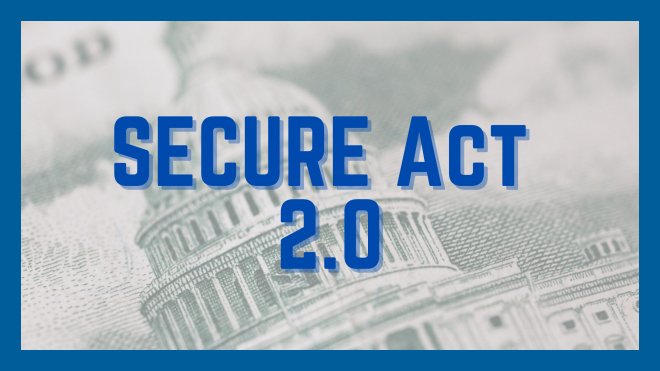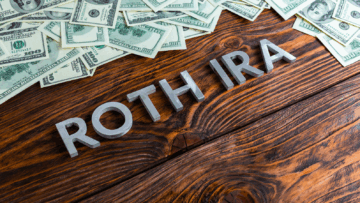If the proposed $3.5 trillion Reconciliation Bill is enacted, it would be one of the most impactful changes to the private retirement system since the SECURE Act was passed in 2019. Perhaps the most far-reaching part of the proposal is a requirement for many businesses to offer a retirement plan for their workers. However, it also means big tax hikes on big corporations and the wealthy.
For those struggling to save for retirement, good news could be on the way. Last week, House Ways and Means Committee Chair Richard Neal (D-MA) released part of the committee’s portion of the Build Back Better bill—the expected $3.5 trillion budget reconciliation measure to advance the more progressive items within the Biden administration’s legislative agenda.
However, this far-reaching package is met with criticism with business and anti-tax groups sure to object the major tax hikes to pay for the bill.


The Build Back Better Agenda is an ambitious plan to create jobs, cut taxes, and lower costs for working families – all paid for by making the wealthiest and large corporations pay higher taxes to compensate the spending.
Biden has pledged to expand Medicare, commit new sums to combat climate change, raise taxes on the wealthy, and boost federal programs that aid low-income families and children. In doing so, they have made grand proclamations about the need for historic investments, especially in the penumbra of a coronavirus pandemic that has left millions of Americans facing financial ruin.
If Congress manage to pass President Biden’s big budget package this fall with most of its spending and tax changes intact, it will represent the biggest shift in federal fiscal policy in 40 years. The proposed top tax rate would revert to 39.6% on individuals earning more than $400,000, or $450,000 for couples, and there would be a 3% tax on wealthier Americans with adjusted income beyond $5 million a year. For big businesses, the proposal would lift the corporate tax rate from 21% to 26.5% on incomes beyond $5 million, slightly less than the 28% rate the president had sought.


The Ways and Means Committee will put an end to the idea that only some workers are worthy of ‘perks’ like paid leave, childcare and assistance in saving for retirement, and finally commit to investments that make these supports fixtures of the American workplace.
First up under the proposal starting in 2023, employers with five or more employees would have to offer a retirement plan and automatically enroll employees, diverting 6% of their pay to a retirement account. An automatic escalation clause would increase the automatic contribution to 10% of pay by year five. The default plan would be a Roth IRA invested in a target-date fund, a mix of investments based on your expected retirement year. For employers, it’s a mandate. They would have to offer the plans. Employees would be able to opt out.
The retirement section of the Build Back Better Act is expected to dramatically expand retirement savings. It would create 62 million new retirement savers and would add an additional $7 trillion in retirement savings over a 10-year period, according to the Employee Benefit Research Institute. Nearly all—98%—of these new savers would be folks who earn less than $100,000 per year.
Secondly under the proposal, is to make the saver’s credit refundable, enabling workers without any income tax liability to receive the benefit in the form of a contribution to their retirement account, according to a copy of the proposal.
The saver’s credit is a tax credit that’s intended to promote retirement savings among low- and moderate-income workers. It can reduce an eligible taxpayer’s federal income taxes when they save in a qualified retirement plan.
In 2021, the maximum credit is worth $1,000 for individuals and $2,000 for married couples filing jointly, although it phases out for higher earners. To qualify for the credit, individuals must have an adjusted gross income of $32,500 or less. The income threshold for married couples is $65,000.
Because the credit is non-refundable, eligible taxpayers are able to use it to effectively reduce their tax bill to zero – but it cannot provide them with a tax refund.


This auto-IRA proposal is different from the one that is in pending bipartisan retirement legislation known as SECURE 2.0, which would not mandate that employers offer these accounts but rather make them voluntary.
SECURE 2.0 contains other important provisions, such as allowing employers to provide matching money to retirement accounts when workers pay off student loan debt.
Representative Neal said that SECURE 2.0 is “getting over the goal line this year” too. Some of the revenue raisers for the Build Back Better Act under discussion relate to retirement, and Representative Neal said that they will be released soon.

Remember, this bill is just one of many floating around congress right now that could impact retirement planning. As we’ve seen in the past, when it comes to major tax reform a lot can change between the first draft and a final bill.
These potential upcoming changes could mean revisiting your current retirement income plan, and the retirement income professionals at CKS Summit Group are here to help. Our focus is to bring you fresh new ideas for your retirement income no matter the political climate and changes that come with it.
From smarter tax planning solutions to long-term investment strategies, our cutting edge tactical portfolios help our clients achieve safe, healthy growth of their savings and preservation of their principal balance. Contact us here today to set up your complimentary strategy session today.



